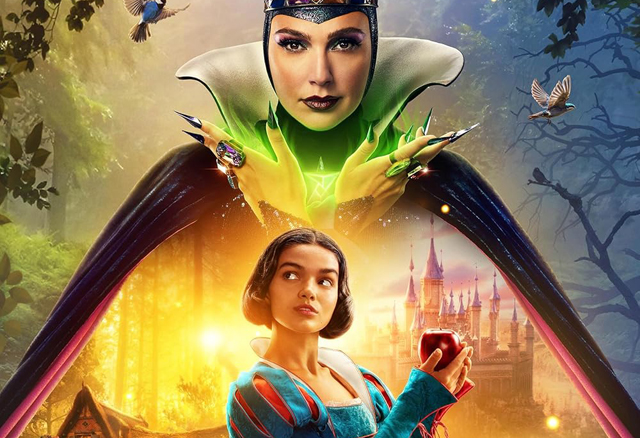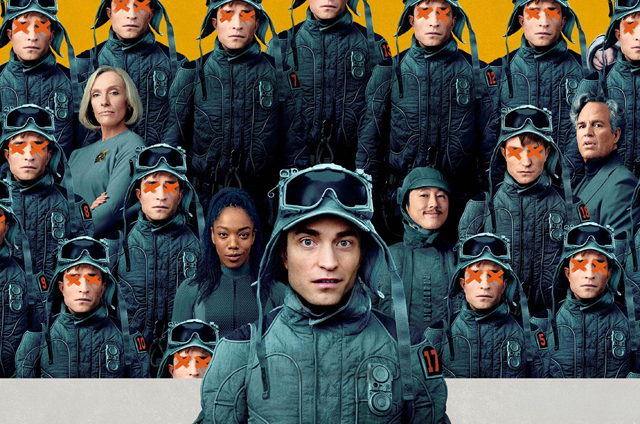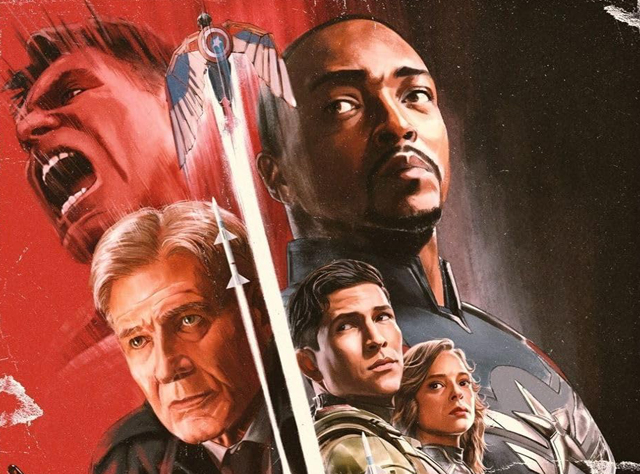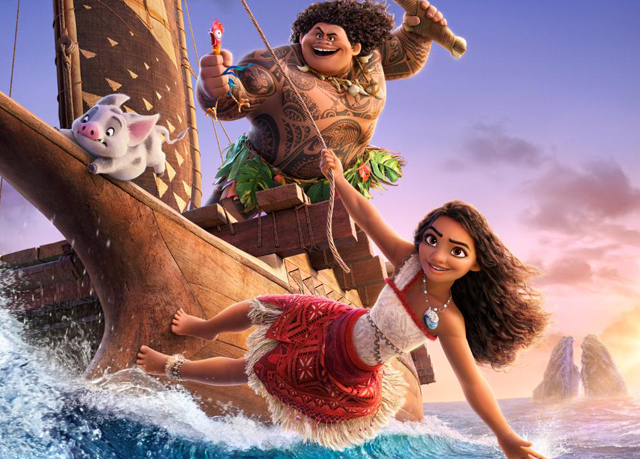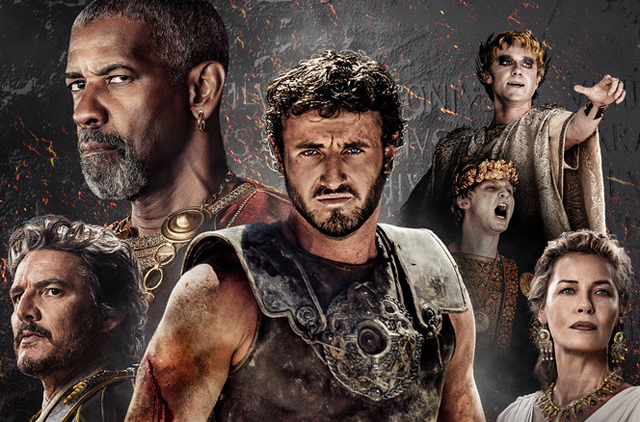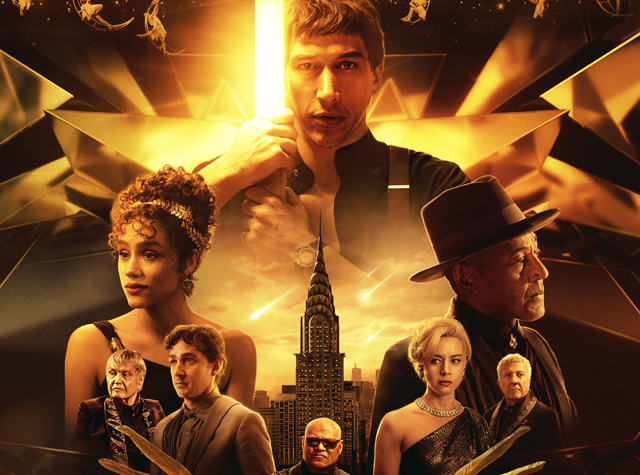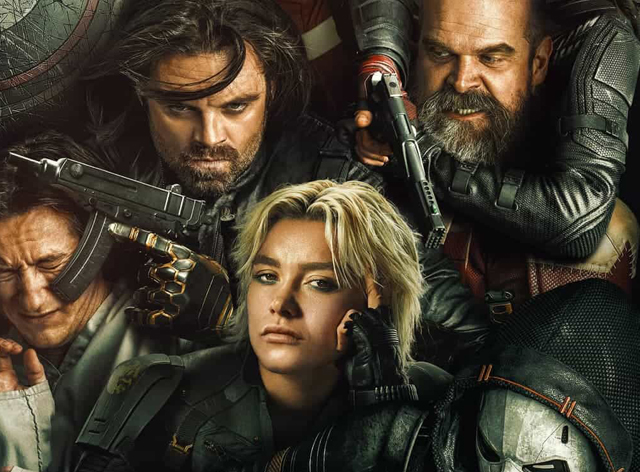
Things haven’t exactly gone according to plan for Marvel since the astronomical success of their last few Avengers films. When Avengers: Endgame (2019) broke every conceivable box office record in it’s opening that summer, it seemed like everything Marvel touched turned to gold. But not to rest on those laurels, Marvel definitely had their plans for the future. They had a plan for the next 3 phases of their cinematic universe, which was about to be turbo charged by the upcoming launch of the Disney+ streaming service, which was also going to be an additional platform for their storytelling going into the future. The first three phases, which centered around the collection of the Infinity Stones and the diabolical plans of the mad Titan Thanos who wanted to use them, would be given the designation of the Infinity Saga, whereas what was coming next would be called the Multiverse Saga. Given that designation, you can imagine what the focuses of phases 4, 5, and 6 would be. This was going to be an ambitious new chapter for the MCU and there was a lot of excitement to be had in the Marvel fandom. Or, at least that was the plan. The onslaught of the Covid-19 pandemic put a massive roadblock in front of Marvel’s plans. Their entire 2020 slate had to be pushed back a year, and the release order of all their projects had to be reshuffled. The beginning of Phase 4 was no longer going to be on the big screen, but instead streaming on Disney+, with the mini-series Wandavision leading the charge. Eventually as the pandemic receded, Marvel was able to get their projects out on time, but there was some trouble brewing as well. The disruption of the pandemic and the inner turmoil at the Disney corporate offices under the short lived tenure of failed CEO Bob Chapek caused Marvel to lose a bit of their creative luster. People were noticing that Marvel had lost some of their edge during this time, and it lead to speculation that maybe the golden era of Marvel was indeed over.
Now, some of the complaints that all of Marvel’s output was falling short were a bit overstretched. I for one still stand by my positive reviews of Eternals (2021) and The Marvels (2023). But it is undeniable that they have struggled to find their footing in a post-Endgame and post-pandemic world. Some might say it was Marvel over-stretching itself by putting half of their output on streaming, which left some of the fan-base who don’t subscribe to Disney+ out in the cold when it comes to the interconnected story-lines. They still have solid successes for sure, like Shang-Chi and the Legend of the Ten Rings (2021), Guardians of the Galaxy Vol.3 (2023) and Deadpool & Wolverine (2024), but they are also being offset with hugely disappointing films like Ant-Man and the Wasp: Quantumania (2023) and the recent Captain America: Brave New World (2025). After the departure of Bob Chapek from Disney, returning CEO Bob Iger took a big look at all the future Marvel projects in development and decided that Marvel needed a major re-calibration. It was practically a necessity after the Jonathan Majors scandal forced Marvel to abandon their plans for the Multiverse Saga centering around his supervillain character Kang the Conqueror. Their initial Kang plans for the upcoming Avengers films were suddenly shelved in favor of focusing on another iconic Marvel villain, Doctor Doom, with Robert Downey Jr. returning to Marvel to play the part. And that shift in plans seemed to ripple across all the other Marvel projects. All the Marvel shows and films were basically put back into the oven to cook a bit more in order to bring the studio back to it’s storytelling roots. You can definitely see a shift from project to project. Captain America: Brave New World seemed to be too far gone in production to be saved with rewrites and re-shoots, but the Daredevil: Born Again series on Disney+ managed to salvage itself and win positive reviews. The remainder of Marvel’s 2025 slate also seems to have benefited from the re-calibration as they are making it to the finish line without costly rewrites and re-shoots generating negative buzz around them. The only question is, are they able to prove that Marvel has their mojo back. That is what we hope to see with the next big new Marvel blockbuster coming out this week; Thunderbolts*.
The story of Thunderbolts* finds controversial CIA director Valentina Allegra De Fontaine (Julia Louis-Dreyfus) facing impeachment charges by the House of Representatives. She is called to Capitol Hill to be grilled by a number of Representatives, including newly elected congressman James “Bucky” Buchanan Barnes (Sebastian Stan), the former Avenger and Winter Soldier. Hoping to skirt repercussions for her more dubious decisions as director, she calls in some of her team of assassins and spies to conduct one final mission. These include former Widow Yelena Belova (Florence Pugh), who is seeking a way out of her line of work; U.S. Agent John Walker (Wyatt Russell), the disgraced ex-Captain America replacement; Ava Starr, aka Ghost (Hannah John-Kamen), a phase shifting powered thief and assassin; and Taskmaster (Olga Kurylenko), a powerful assassin with mimic capabilities. They are all called to infiltrate a secretive underground facility belonging to Valentina’s shadowy O.X.E. Group, which had been using the base for top secret experimentations. The group of killers quickly put it together that they were sent there to assassinate one another as part of Valentina’s plan to wipe her slate clean of all incriminating evidence, including them. But they find someone else in the bunker with them, a dazed and disoriented man who calls himself Bob (Lewis Pullman). They all manage to fight their way out of the bunker, but soon learn that Bob is more than what he seems. It turns out he’s the sole survivor of a human experiment project for something called the Sentry Project. Things go awry during their escape, and the team of misfit mercenaries end up wandering through the desert, hoping to evade Valentina’s forces. Along the way, they are picked up by Yelena’s adoptive father, Alexi Shostakov. the former Red Guardian (David Harbour), who has been eager to get back into the hero business. They are also intercepted along the road by Bucky Barnes, who is tired of sitting through congressional meetings and is ready to take matters into his own hands. Meanwhile, upon learning that the Sentry program yielded a successful specimen, Valentina has aims of using Bob to her own ends. However, something much darker lies underneath the new power base that is a part of Bob now. Can the rag tag band of anti-heroes, who have jokingly taken on the name Thunderbolts, end up defying their own shortcomings to become true heroes and stop Valentina from making the wrong move with her plans for Bob?
Thunderbolts* comes out at an interesting time for Marvel. While the studio has made major moves behind the scenes to help salvage their Cinematic Universe, it’s uncertain just yet if that change will prove fruitful. Deadpool & Wolverine was a massive success, but that sort of stood on it’s own, being less of an entry for the character into the MCU and more of a continuation of his own franchise. It didn’t help that this year started off with Captain America: Brave New World, which was a victim of Marvel’s uncertain direction which resulted in underwhelming box office. Thunderbolts* has a lot to prove to both long time fans of the MCU, as well as casual viewers; can Marvel recapture their glory. The best thing I can say about Thunderbolts* is that it doesn’t have any of the problems that plagued Brave New World. It’s a movie with a clear idea of what it wants to be, and it doesn’t clutter the story with a whole lot of connected universe nonesense. That ultimately was Brave New World’s downfall; that it didn’t know what it wanted to be. And the fact that it required a whole lot of Marvel lore homework to understand left the audience at arms length from the emotional core. Thunderbolts* on the other hand doesn’t require you to have seen every Marvel property that ever was. It certainly helps, considering that all of the characters (except Bob) have appeared in past Marvel movies and shows, but the movie doesn’t assume that everyone is up to speed. Instead, it expertly places all the characters within the situation and allows us to understand these characters through the dilemma. And that’s where the movie draws it’s biggest strength, seeing how these characters interact off of each other. For the most part, Thunderbolts* represents a fine return to form for Marvel storytelling, where they manage to stick to telling one story at a time and not feel like a middle chapter in an ongoing story. The MCU at it’s best allowed for each of their movies to have an identity all on their own, so that any casual viewer could have an easy entryway into the story of the movie they would be watching. Post-Endgame, there seemed to be less concern about letting a movie stand on it’s own and more about setting up for the future. Quantumania was the worst offender of this, and ironically it’s job was setting up a future that we’ll likely never see now. Sure there are still Easter eggs in Thunderbolts*, but they take a back seat to having us be involved in the story at hand.
But, even as Thunderbolts* does get a lot of things right, I wouldn’t say it reaches the astronomical heights of the MCU at it’s best. It’s biggest obstacle would be the sense of familiarity. It doesn’t change the game in the same way that Guardians of the Galaxy (2014) or Black Panther (2018) did, showing us something new in the super hero genre. Thunderbolts* is just a very well executed but otherwise conventional Marvel film. Perhaps what all the excitement about this film stems from is that people have been craving this kind of Marvel movie for a long time. The action scenes and banter between the characters are all a lot of fun, but I also wasn’t feeling like the movie wowed me in anyway. The heights of the MCU where you felt like you were on the edge of your seat waiting to see what would happen next isn’t quite there in this film. But, what is there still left a smile on my face. I liked how the movie molds these characters over the course of the film, going from jaded individualists to a group of friends who have each other’s back by the end. It could be easy to say that this is Marvel’s answer to The Suicide Squad from DC, but that’s not exactly what this movie is going for either. There’s growth in these characters that gets surprisingly deep; showing that there is a lot of trauma in each of their pasts, and that each one of them has the capability of being better. I loved the concept of facing the dark side of your persona and learning to live with it as a part of you while also rising above it being a crucial part of the plot. The climax of the movie literally has all of the characters facing down their demons and finding strength together. That’s the heart of this film, and the movie succeeds the most in delivering that message. The banter with all of the characters is also a lot of fun. Given that these characters are a dark shadow of the Avengers team themselves, it’s fun to see their bonding come through with a bit more friction in the beginning. And they get a little more cutting in their insults than any of the Avengers would have done; except maybe Iron Man.
The best asset this movie has is undoubtedly it’s cast. Everyone here has been making the rounds within the post-Endgame MCU, but in this film we finally get to see the actors really get to the core of who these characters are. Both Florence Pugh and David Harbour were easily the highlights of the otherwise sub-par Black Widow (2021) movie in which they were introduced. Thankfully neither misses a beat here. Harbour’s Alexi naturally gets most of the big laughs in the movie, and I absolutely love the energy he brings to this role, keeping it silly while avoiding becoming too cartoonish. Pugh’s Yelena sort of acts as the main character of the movie and she delivers a fantastic performance here. We really get to see her emote in this performance, as Yelena goes through some very rough emotional hurdles in this movie, but the movie still manages to keep that fun sarcastic side to her intact. Wyatt Russell and Hannah John-Kamen also get to flesh out their characters a lot more, showing their growth from disgraced misfits to heroes with a purpose. Sebastian Stan, the most veteran member of this cast in the MCU, dating back over a decade down to Captain America: The First Avenger (2011), delivers the standard bad ass elements of his character that you’d hope to see here, but he also manages to work a bit of a fun side in there too. It is funny to see him outside of his element trying to be a congressman and how it clearly is stiffing to him. It’s great to see that Stan has not grown out of the character just yet because he is still a lot of fun to watch as the Winter Soldier. We also get to see Julia Louis-Dreyfus finally get to let loose in a more villainous role. She’s been making some trouble in the MCU through appearances in The Falcon and the Winter Soldier Disney+ series and in Black Panther: Wakanda Forever (2022), but here we finally get a sense of just how cutthroat and morally scrupulous Valentina can be. But perhaps the actor who has the most heavy lifting to do in this movie is Lewis Pullman as Bob. He is definitely the films most interesting character, and it’s a testament to Pullman’s performance that you don’t quite know what turn his character will take. At times he’ll be charmingly goofy, but then in an instant he’ll be forebodingly creepy. It’s a balancing act that he manages to pull off well and it makes his character’s journey all the more fascinating.
Of course, when we go to Marvel movies, we expect there to be some spectacle, and Thunderbolts* does deliver on that. One particular standout is a vehicular chase scene in the middle of the film. A scene like that one does show one of the movie’s strengths, which is that it’s far less reliant on CGI visual effects than most of the other recent Marvel films. The action scenes are well choreographed and very grounded in reality, which makes sense given that most of the Thunderbolts are physical fighters rather than super powered beings. The only down point with regards to the fight scenes are those moments when it does start to rely on CGI. The digital effects in this movie, to be honest, are not very good, and in one scene in particular near the end it is so blatantly obvious that the characters are being replaced with CGI doubles because they start to look like video game characters. Thankfully, it’s just one scene where that stands out like a sore thumb. There is, however, one digital effect in the movie that does look quite good. Towards the end of the climax, one of the villains goes through a transformation and it is a very chilling and effective digital effect. What that character is also able to do is pretty creepy and gets one of the most shocking reveals in the film as well. In this instance, it’s the part of the movie that does feel like something we’ve never seen from Marvel before and that helps to make the final act of the movie work as well as it does. The movie has a very imaginative finale, and it’s good to see Marvel actually take some chances with this one. And like the best Marvel films, it’s a climax that actually feels like it has some weight to it; that you really don’t know where it’s actually going to end up. The film for the most part delivers on what we expect from the MCU, but it is a positive sign that Marvel’s getting back to delivering substance along with the spectacle.
Overall, I don’t feel like Marvel hit a home run with this movie, but it certainly is a solid double and maybe even a triple thanks to that strong finale. I thought all of the performances really helped to make this a fun time at the movies, with Florence Pugh and Lewis Pullman being particular stand outs. Also, it’s finally getting Marvel back to the point where they can make any one of their movies stand on their own when viewed apart. This movie didn’t feel like an obligation, but rather chance to explore a bit more of the this cinematic universe we love. Sure, anyone who has kept up will get all the clues about what is to come next, including with the obligatory post credits scene, which this one actually delivered with a good tease. It’s in stark contrast with something like Captain America: Brave New World, which felt like it was telling five different stories in one. Thunderbolts* knows that we just came to see a group of misfit characters from Marvel’s B-list interact with each other and found a way to have fun with that. I even love the fact that the name Thunderbolts* itself is it’s own inside joke. Not to spoil too much, but I will say that we do get an answer for what the asterix in the title actually means and it’s actually a pretty good reveal. The origin of the Thunderbolts name is also a pretty cute reveal. I saw this film as a slightly better than average film in the pack. I would actually rank it with the two misunderstood movies that I seemed to like when no one else did (Eternals and The Marvels). It is a vast improvement over Brave New World and most of the other middle of the road MCU films made in this Multiverse Saga. It is still no Avengers level success, but at the same time, it shouldn’t have to be. The best thing it does is show that Marvel can indeed still make a thoroughly enjoyable movie that doesn’t have to be just another cog in the machine. Hopefully the solid results from this means good things for Marvel’s future, especially with The Fantastic Four: First Steps (2025) around the corner. Given the underdog status of the characters that make up the Thunderbolts team, it’s fitting that their own movie managed to prove a lot of people wrong and ended up rising to the challenge.
Rating: 8/10
